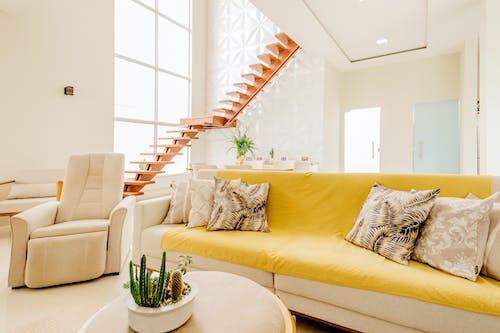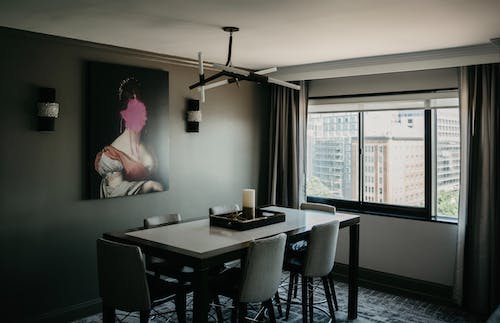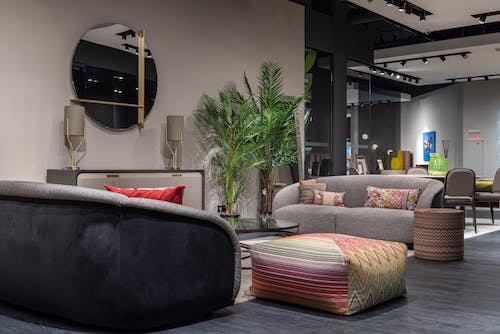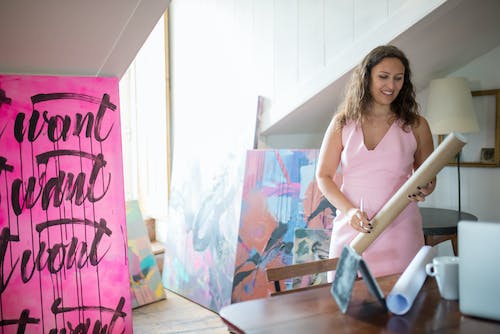The Ultimate Guide to Room Designing: Enhance Your Space Like a Pro
As someone who loves interior design, I believe that room designing is one of the most exciting things to do when it comes to decorating your home. A well-designed room can make you feel relaxed, energized, and happy. In this ultimate guide to room designing, I will be sharing tips and tricks on how to enhance your space like a pro.
Introduction to Room Designing
Room designing is the process of creating a functional and aesthetically pleasing space. It involves selecting colors, furniture, lighting, and accessories to create a cohesive and harmonious design. Room designing is not just about making your space look beautiful, but it also involves making it comfortable and functional for your everyday needs.
The Importance of Room Designing
Room designing is essential for several reasons. First, a well-designed room can enhance your mood and productivity. For example, a bright and colorful room can make you feel happy and energized, while a dark and cluttered room can make you feel depressed and unmotivated.
Second, room designing can help you make the most out of your space. A well-designed room can maximize your storage, make your space feel more spacious, and improve the flow and functionality of your home.
Lastly, room designing can also increase the value of your home. A well-designed home can attract potential buyers and increase the resale value of your property.
Room Designing Styles
There are several room designing styles to choose from, and each style has its unique characteristics. Here are some of the most popular room designing styles:
Modern
Modern room designing style is characterized by clean lines, minimalism, and simplicity. It features neutral colors, such as white, black, and gray, and uses materials like glass, metal, and concrete. Modern room designing style is perfect for those who love a sleek and minimalist look.
Traditional
Traditional room designing style is characterized by rich colors, ornate details, and classic furniture pieces. It features warm colors like gold, red, and brown, and uses materials like wood, silk, and linen. Traditional room designing style is perfect for those who love a classic and timeless look.
Rustic
Rustic room designing style is characterized by natural elements, such as wood, stone, and brick. It features warm and earthy colors like brown, beige, and green, and uses materials like leather, wool, and cotton. Rustic room designing style is perfect for those who love a cozy and natural look.
Read More: Embracing a Minimalist Living Room Design
Room Designing Elements – Colors, Lighting, Texture, and Space
Room designing involves several elements, including colors, lighting, texture, and space. Here are some tips on how to use these elements to enhance your space:
Colors
Colors play a significant role in room designing. They can affect your mood, perception, and even appetite. Here are some tips on how to use colors in your room designing:
- Use neutral colors like white, beige, and gray as a base color to create a calming and peaceful environment.
- Use bold colors like red, blue, and green to add energy and vibrancy to your space.
- Use complementary colors like blue and orange, or green and pink, to create a harmonious and balanced look.
Lighting
Lighting is another crucial element in room designing. It can affect the mood and ambiance of your space. Here are some tips on how to use lighting in your room designing:
- Use natural lighting as much as possible to create a bright and airy atmosphere.
- Use task lighting, such as table lamps and desk lamps, to provide focused light for specific activities.
- Use ambient lighting, such as chandeliers and pendant lights, to create a warm and inviting atmosphere.
Texture
Texture is an essential element in room designing. It can add depth and dimension to your space. Here are some tips on how to use texture in your room designing:
- Use different textures, such as velvet, silk, and wool, to create a cozy and inviting atmosphere.
- Use natural materials, such as wood and stone, to add an organic and natural feel to your space.
- Use patterned fabrics, such as floral and geometric prints, to add visual interest and texture.
Space
Space is another crucial element in room designing. It can affect the flow and functionality of your space. Here are some tips on how to use space in your room designing:
- Use furniture pieces that are proportionate to your space to create a balanced and harmonious look.
- Use storage solutions, such as bookshelves and cabinets, to maximize your space and reduce clutter.
- Use rugs and artwork to create zones and define separate areas in your space.
Room Designing Tips for Small Spaces
Designing a small space can be challenging, but it is not impossible. Here are some tips on how to design a small space:
- Use light colors to create an illusion of space.
- Use furniture pieces that can serve multiple purposes, such as a sofa bed or an ottoman with storage.
- Use mirrors to reflect light and create an illusion of space.
- Use vertical space, such as wall-mounted shelves and hanging plants, to maximize your space.
Room Designing Tips for Large Spaces
Designing a large space can be overwhelming, but it is an opportunity to create a grand and luxurious look. Here are some tips on how to design a large space:
- Use bold colors and patterns to add energy and vibrancy to your space.
- Use large furniture pieces, such as a sectional sofa or a king-sized bed, to fill up your space.
- Use statement pieces, such as a chandelier or an artwork, to create a focal point in your room.
- Use rugs and curtains to divide your space and create separate zones.
Room Designing Mistakes to Avoid
Designing a room can be exciting, but it is essential to avoid some common mistakes. Here are some mistakes to avoid when designing your room:
- Don’t overcrowd your space with too many furniture pieces or accessories.
- Don’t use too many bold colors or patterns that can overwhelm your space.
- Don’t ignore lighting, as it is essential to create a mood and ambiance in your space.
- Don’t forget to consider the functionality of your space, as it is crucial to make your space comfortable and practical.
Room Designing Tools and Resources
Room designing can be overwhelming, but there are several tools and resources available to help you. Here are some tools and resources that can help you design your room:
Room Designing Software
Room designing software can help you visualize and plan your room design. Some popular room designing software includes:
- SketchUp
- Room Sketcher
- Sweet Home 3D
Online Room Designing Tools
Online room designing tools can help you select colors, furniture pieces, and accessories for your space. Some popular online room designing tools include:
- Houzz
- Wayfair
Conclusion
Room designing is an exciting and creative process that can enhance your space and improve your mood and productivity. With the right elements, tools, and resources, you can design your space like a pro. Remember to consider the functionality, mood, and ambiance of your space when designing it. Happy designing!
CTA: Start designing your room today with our online room designing tools!






